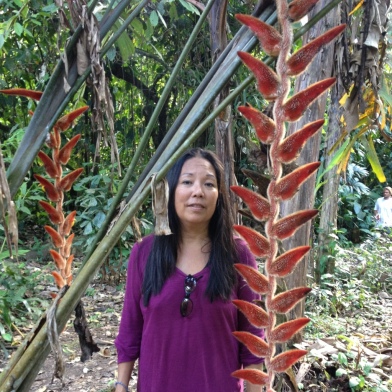This slideshow requires JavaScript.
During my artist residency at the Santa Fe Art Institute, I learned that the history of the New Mexico internment camps was not well known, and people wanted to know more.
My focus became, how could art bring understanding and connection to the communities in Santa Fe? I wanted to inform the public about this history that has touched my own Japanese American family and invite people of other cultures to express their stories of displacement, unjust incarceration, and immigration journeys.
I decided to create an experiential space incorporating modalities like drawing, movement, speaking, listening, and re-enactment.
Participants were invited to create a presence for those they wanted to remember. Just the simple task of striking a pose of a loved one and being outlined in red crayon, connected the collaborators, and spontaneous memories were shared. These ancestor drawings on the gallery walls created a safe and sacred place for remembering.
It was a very moving event with many voices, quiet support, some tears, and an overall powerful energy of compassion. People traveled from as far away as Taos, Las Vegas, and Albuquerque to attend. The walking meditation lead by Eliane Allegre with the music provided by Glen Neff put the participants in a contemplative space to consider stories of incarceration, immigration, and displacement. 15 storytellers came forward to share internee memories and other difficult and heartfelt experiences.
The gallery event was followed by the visit to the Santa Fe Internment Marker. It was chilly, windy and clear beautiful day. We carried symbolic suitcases, like the prisoners traveling to a place unknown. Upon arriving the cases were opened and the folded cranes and flowers inside were used to embellish the marker. Historian and writer Nancy Bartlit and Victor Yamada of the NM Japanese Citizen League, spoke about the marker history and future plans to bring more visibility to the history of the New Mexican Internment Camps.
You may ask, why is it important to share this history from 73 years ago? In the United States today, we are still imprisoning innocent families, like those from Central America. In a world of terrorist atrocities, the backlash of racial and ethnic prejudice is rampant. We must find ways to understand and connect to each other and art is a powerful way to do it.
Thank you to all of you who supported this special sharing event. It couldn’t have happened without the team of Victor Yamada, Sue Rundstrom, Nancy Bartlit, Santa Fe Art Institute, Glen Neff, Eliane Allegre, and many others.
Thank you to the Santa Fe Art Institute for selecting me for the immigration artist in residence program.






